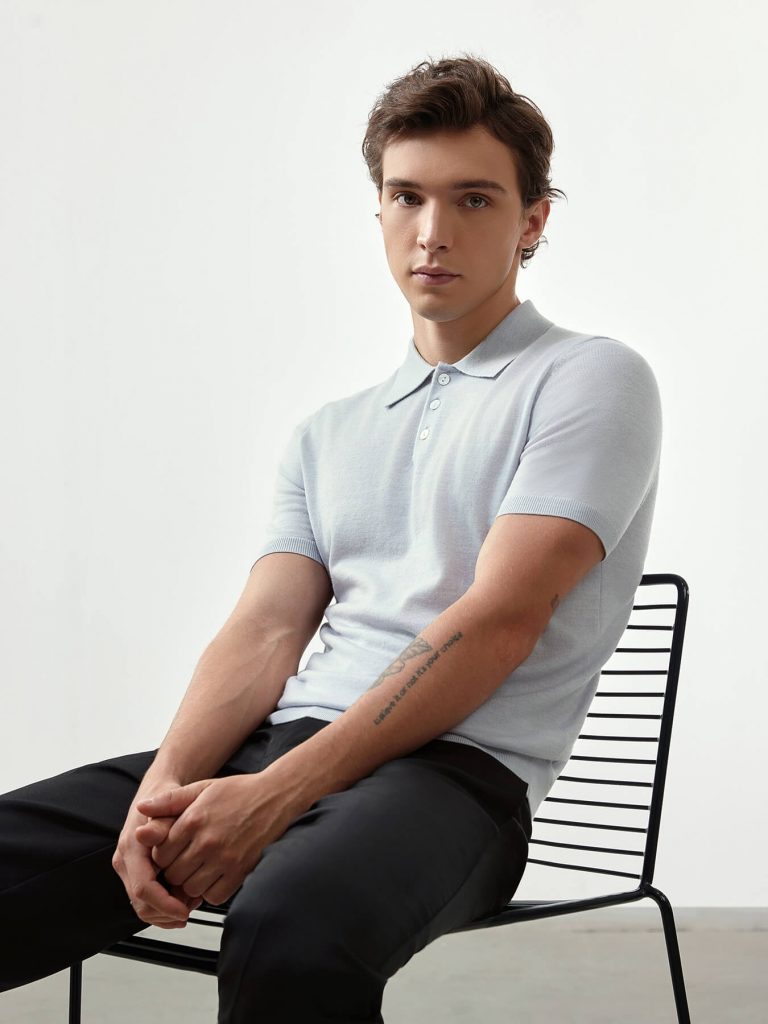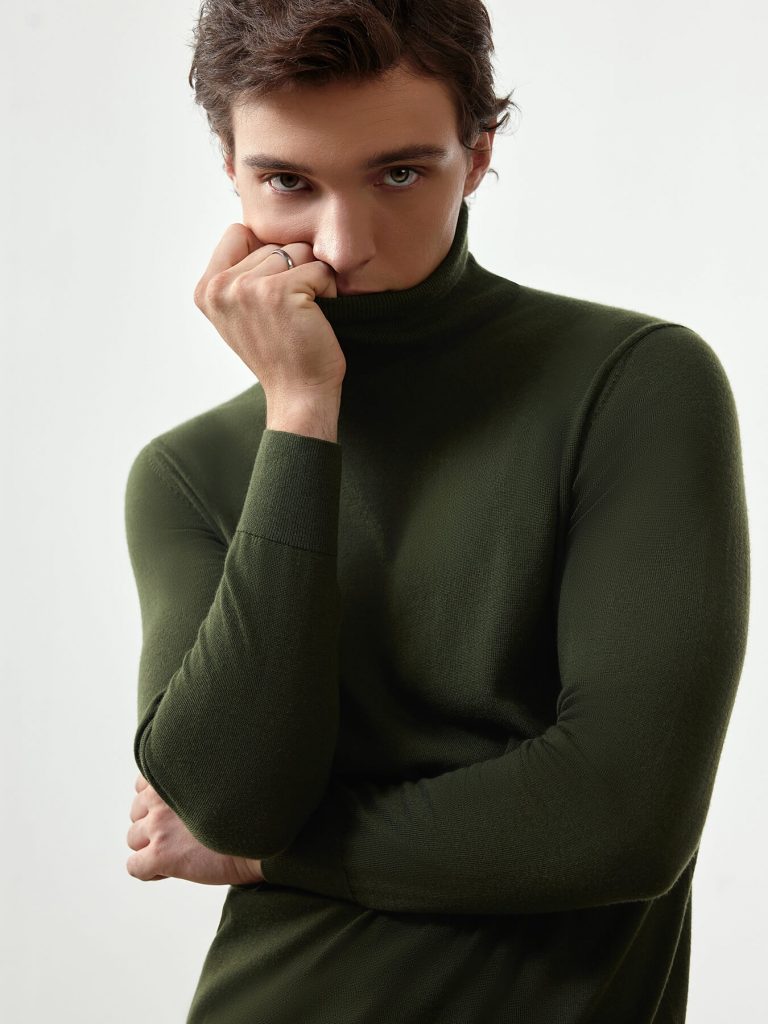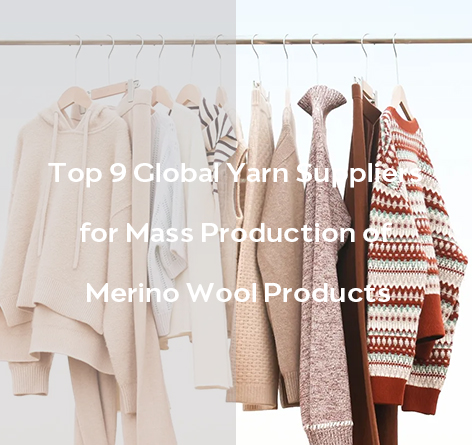4. Matching Knit Sweaters with Personal Style
(1) Identifying Your Style
- Classic vs. Trendy
Classic: Select design options that are timeless like crew necks, V-necks, and cardigans that are neutral like gray, navy, and beige. These styles have versatility and are appropriate for various situations. Classic sweaters are commonplace in the wardrobe, they easily blend in with other outfits and produce a consistently refined appearance.
Trendy: Offering vibrant colors, striking patterns, and contemporary styles like oversized or cropped sweaters that make a statement and keep your Wardrobe fresh.
Practical Tip: Trendy sweaters facilitate personal expression. Combine them with traditional items to enhance versatility and longevity.
- Casual vs. Formal
Casual: For a simple appearance, combine sweaters with jeans or chinos. Casual necklines, cardigans, and lightweight pullovers are best for regular wear.
Practical Tip: Concerned with practicality and comfort. Overlap jackets or vests to increase your versatility and warmth.

Formal: Increase the height of your ensemble by wearing sweaters underneath blazers or paired with dress pants. Select materials with a fine mesh like cashmere or Merino wool for a polished appearance.
Practical Tip: Ensure that sweaters are smoothly integrated into blazers to avoid bulk. Select sleek, minimalist styles that have a refined appearance.
(2) Color and Pattern Choices
- Color Psychology
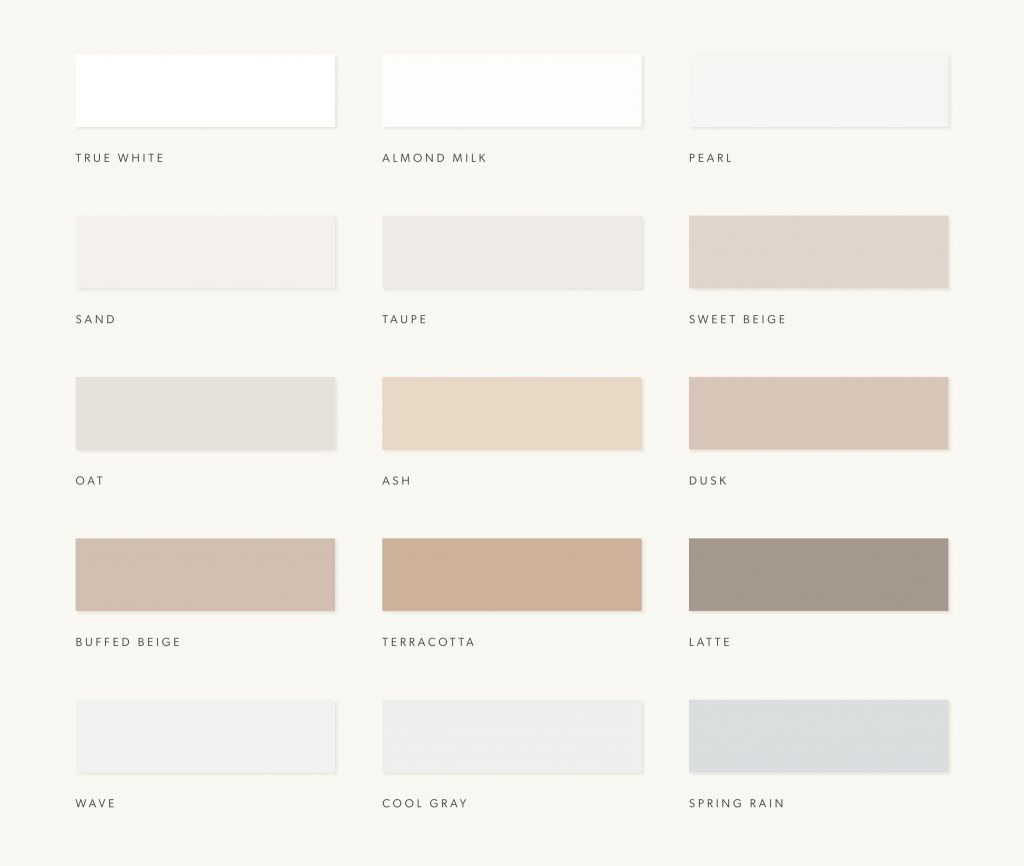
Neutral Colors: Beige, gray, black, and navy are versatile and long-lasting, they pair easily with different outfits and are suitable for both casual and formal wear.
Bold Colors: Reds, greens, and blues enhance the statement, and are popular. Use these colors to imbue your personality into your Wardrobe or highlight important parts of your outfit.
Practical Tip: Select colors that fit your skin tone and your existing wardrobe. Buy in neutral tones for everyday use and bold colors for notable items.
- Patterns and Prints
Stripes and Checks: Patterns imbue visual interest and are appropriate for both formal and informal occasions. Ensure that patterns harmonize with the overall aesthetic of your attire and the occasion’s context.

Solids: Solid colors have a classic and clean appearance, which allows for different styles and settings.
Practical Tip: Keep a patterned piece in mind when combining it with another solid component. This will help to avoid overdoing your outfit. Solid sweaters are durable and provide a solid basis for multiple appearances.
(3) Incorporating Accessories
- Scarves and Hats

Scarves: Incorporate extra warmth into your outfits by adding scarves that are either complementary or contrasting in color. Chunky knitted scarves are appropriate for casual clothing, while silk or wool scarves will enhance formal attire.
Hats: Casual beanies or caps have a casual appearance, while fedoras or formal caps increase the formality of outfits.
Practical Tip: Select accessories that complement your sweater’s design and the occasion. A proper scarf or hat can have both practicality and beauty.
- Belts and Footwear
Belts: Select belts that go with your sweater and pants. Slim belts are appropriate for formal occasions, while casual belts are appropriate for casual wear.
Footwear: Combine your sweater with appropriate footwear, such as loafers or boots for casual wear, and formal shoes for occasions that require formal wear.
Practical Tip: Combine your coordinate shoes and a sweater to create a consistent appearance. Ensure that the formality of your accessories is in harmony with the entire outfit.
5. Seasonal Considerations
(1) Choosing Sweaters for Different Seasons
- Fall and Winter
Heavier Knits: It’s recommended that you choose wool, cashmere, and thicker knitted sweaters to enjoy the warmth. Overlap the top of your head with coats and scarves that will enhance your insulation and fashion. Actually, chunky merino wool sweater is a better choice for men who like to stay at home casually, more calm and elegant, and it is also good for keeping warm.
Practical Tip: Select sweaters that have thermal properties and a variety of layering options in order to remain comfortable during cold weather.
- Spring
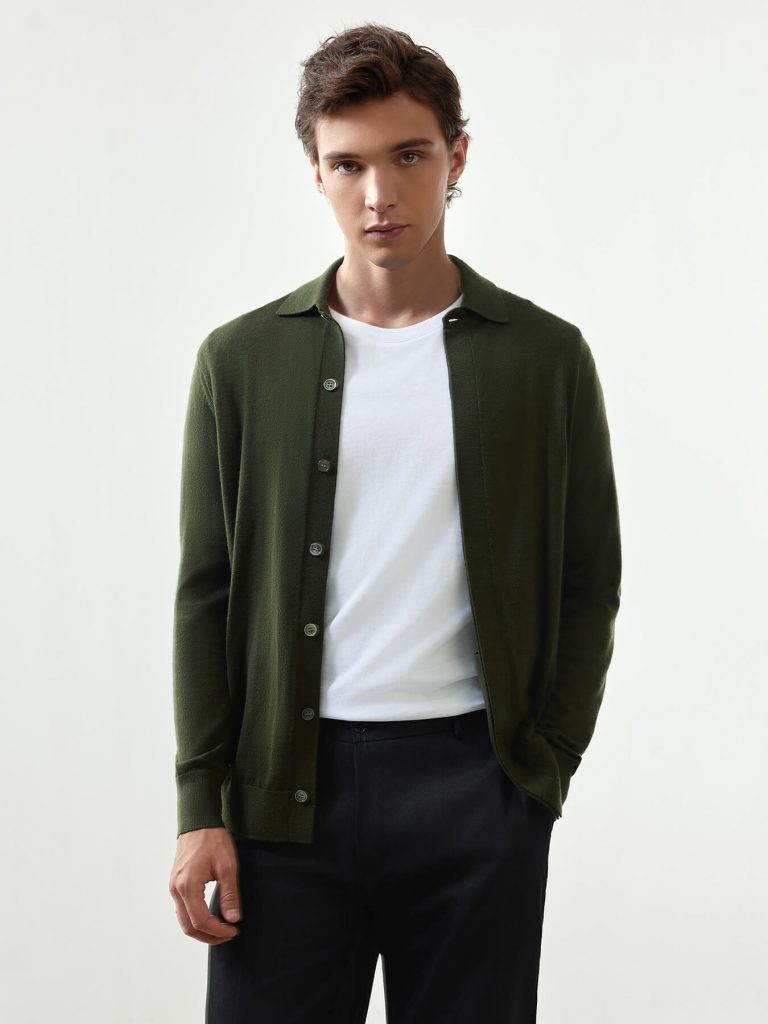
Lighter Knits: Go for cotton or a mix of sweaters in transitional weather. Lighter colors and fabrics that are breathable are best for the season.
Practical Tip: Transfigure your wardrobe with sweaters that can be combined or worn alone in milder temperatures.
- Summer
Lightweight Knits: For nights that are cooler than normal or spaces that are air-conditioned, lightweight sweaters in breathable fabrics are appropriate. Select lighter colors that correspond with the season.
Practical Tip: Lightweight knits are ideal for over the summer layering or providing warmth in cold environments.
(2) Caring for Seasonal Knitwear
- Washing and Drying
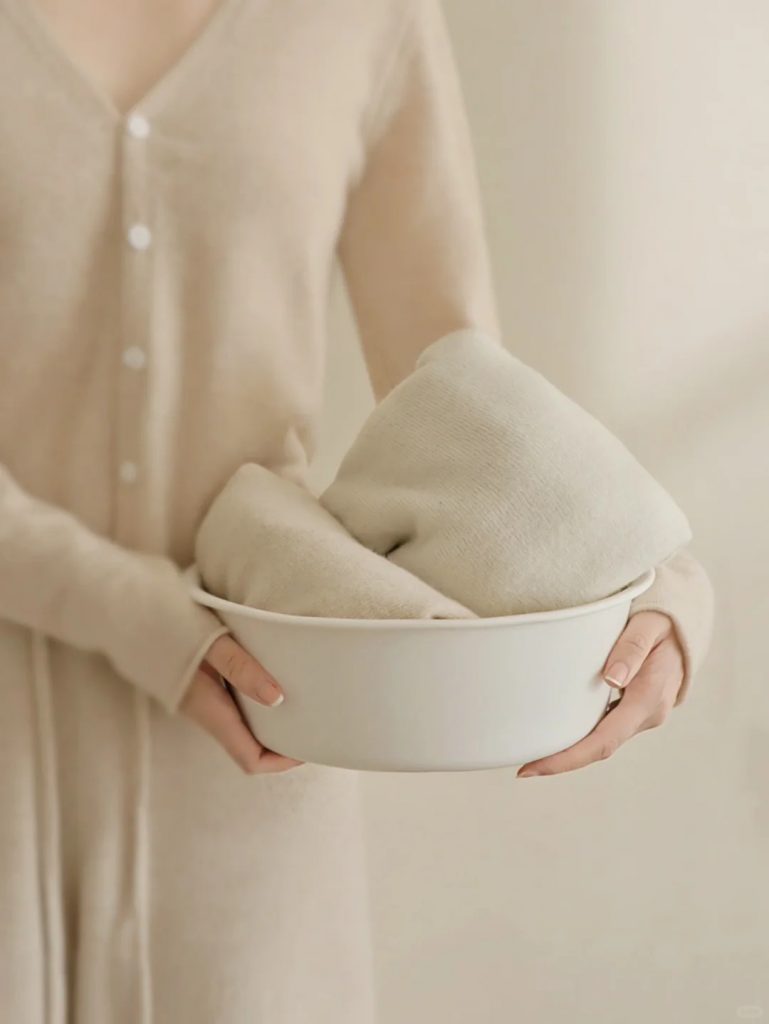
Material-Specific Care: Follow the instructions for care of each material. Hand wash delicate fabric like cashmere and air dry to maintain their original shape.
Machine Washing: For more robust materials, utilize a harsh cycle with cold water. Insert the sweater into a fabric bag in order to reduce the likelihood of friction and wear.
Practical Tip: Always follow the care instructions on the label to ensure the proper washing and drying of each sweater.
- Storing Knitwear
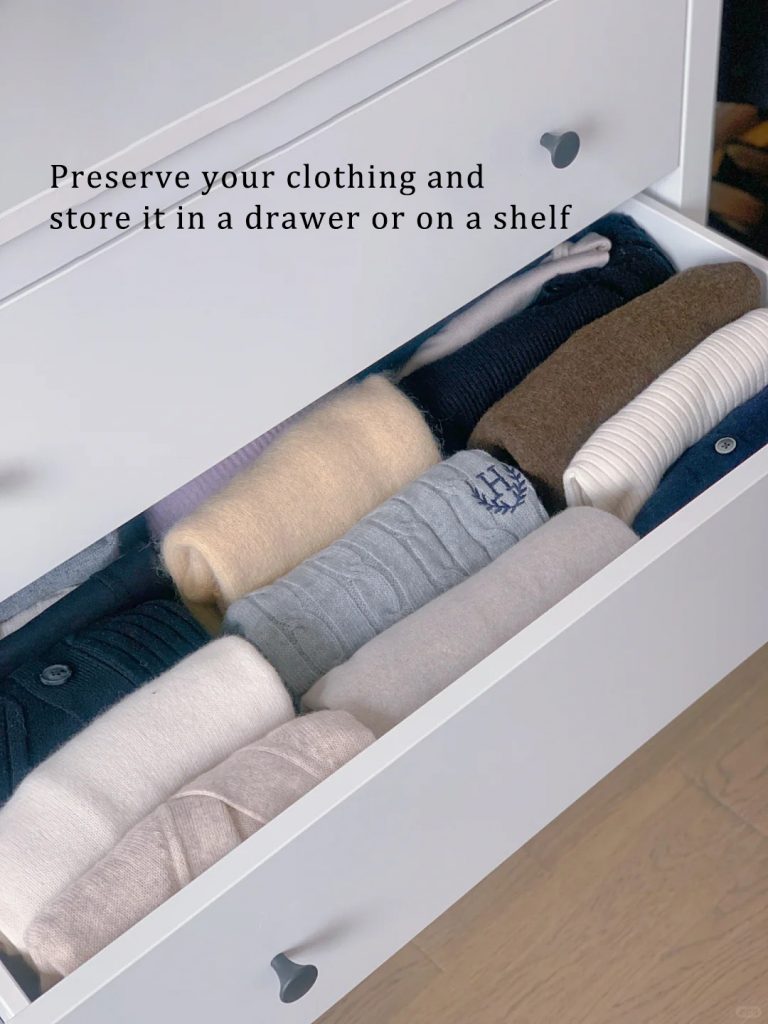
Proper Storage: Keep sweaters in a cool, dry environment that will prevent damage. Sweaters that are foldable and avoid stretching are used to protect them from moths. Useable, breathable bags are employed to carry them.
Practical Tip: On a regular basis, inspect your storage area for pests and humidity to maintain the condition of your sweaters.
6. Maintenance and Care Tips
(1) General Care
- Washing Techniques
Hand Washing: Use cool water and a mild detergent for delicate fabric. Avoid pulling in order to maintain the sweater’s form.
Machine Washing: For materials that are durable, choose a delicate cycle with cold water. Use a mesh bag to reduce the damage caused by friction.
Practical Tip: employ a mild detergent and avoid overloading the washing machine to preserve your sweaters.
- Drying and Ironing
Drying: Lay flat on a clean towel and conform to the necessary shape. Avoid striving to stretch while hanging.
Ironing: Use a low-temperature setting with a pressing cloth in order to avoid direct contact with the fabric.
Practical Tip: Follow the garment’s instructions regarding care in order to avoid damage during the drying process or ironing.
(2) Pilling Prevention
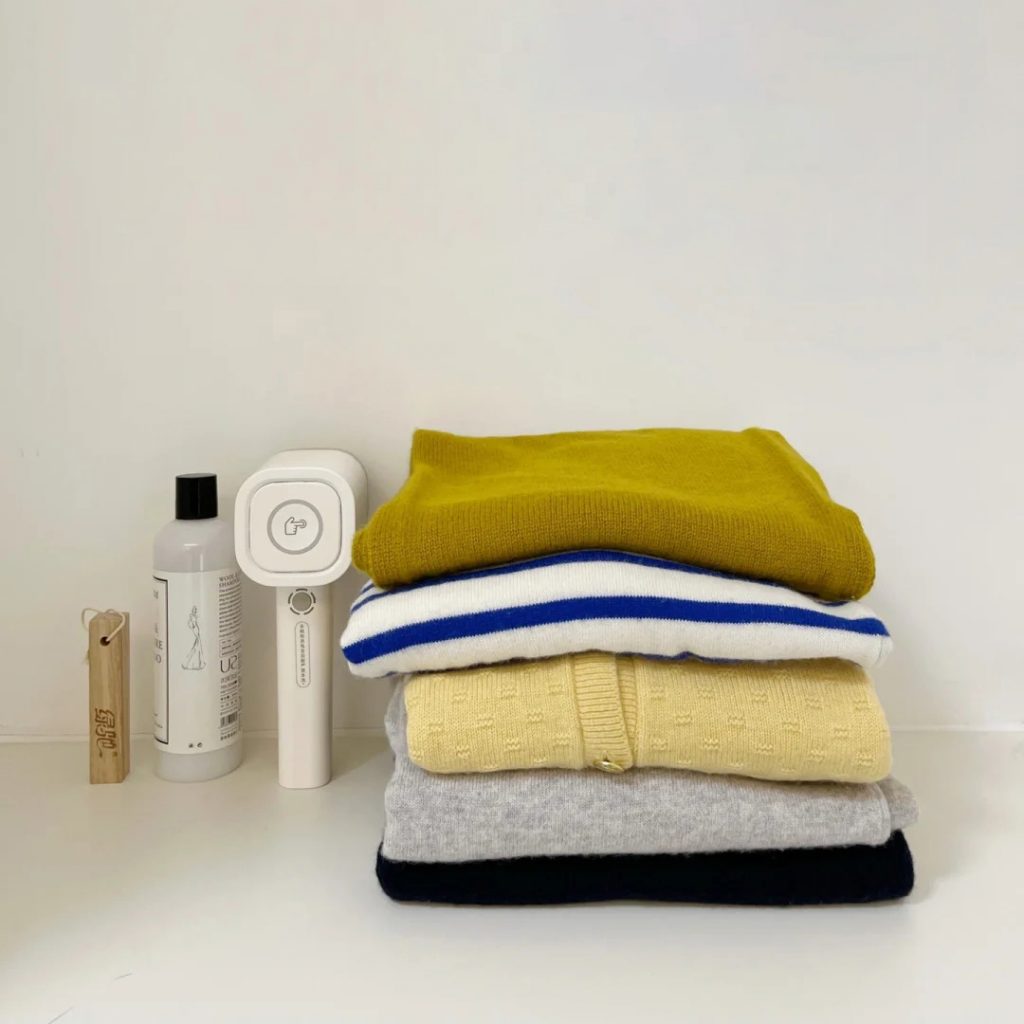
Fabric Shavers: Use a fabric shaver or sweater comb to eliminate the presence of pills and maintain a flawless appearance.
Avoid Rough Surfaces: Avoid contact with crude surfaces and ensure proper storage.
Practical Tip: Constantly address the pilling to maintain the sweater’s visual appeal and extend its lifespan.
(3) Repairing Damage
Minor Repairs: Use a needle and thread to mend small tears or imperfections, this will prevent additional damage.
Professional Services: For significant sửa chữa, talk to a professional tailor or knitwear expert.
Practical Tip: Admit minor flaws as quickly as possible to avoid costly repairs or substitutes.
7. DIY and Customization
(1) Customizing Your Sweater
- Personal Touches
Embroidery and Patches: Personalize your sweater with custom embroidery or patches to reflect your individual style.
Practical Tip: Customization adds a unique touch and can make your sweater stand out.
- Alterations and Repairs
Professional Tailoring: For a precise fit, consider professional tailoring. DIY repairs can address minor adjustments.
Practical Tip: Tailoring enhances fit and extends sweater life. Choose a reputable tailor for quality results.
(2) Crafting Your Own Knitwear
- Knitting Your Own Sweater
Beginner Kits: Explore knitting kits and online tutorials for crafting your own sweaters, suitable for beginners.
Practical Tip: Start with beginner kits to build skills, then progress to advanced projects for a rewarding crafting experience.
8. Popular Brands and Recommendations
(1) Top Knitwear Brands
- High-End Brands
Brunello Cucinelli: Renowned for luxury cashmere and superior wool sweaters.
Loro Piana: Offers exceptional knitwear made from premium materials.
- Affordable Brands
Uniqlo: Provides stylish and budget-friendly knitwear options.
H&M: Features a variety of designs suited to different tastes and budgets.
(2) Product Recommendations
- Best Sweaters for Different Needs
Everyday Wear: Consider cotton or cotton-blend sweaters from brands like Gap or J.Crew for reliable everyday wear.
Special Occasions: Opt for cashmere sweaters from The Elder Statesman or Naadam for a sophisticated look.
9. Styling Tips and Outfit Ideas
(1) Outfit Pairings

- Casual Looks
Jeans and Chinos: Combine your knit sweater with jeans or chinos for a relaxed yet stylish look. Casual crew necks and cardigans are ideal for everyday wear.
- Formal Outfits
Layered Looks: For a formal appearance, layer a slim-fit cashmere sweater under a blazer or tailored coat. This combination is both stylish and refined.
(2) Creative Accessorizing
- Layering
With Jackets or Vests: Experiment with layering your sweater with jackets or vests to add dimension and warmth.
- Footwear and Accessories
Footwear: Choose footwear that complements your sweater and overall outfit, such as loafers, boots, or sneakers.
Accessories: Enhance your look with scarves, hats, or belts that match the sweater’s color and style.
(3) Trend Spotting
- Oversized Fits: Embrace oversized sweaters for a contemporary, relaxed look.
- Unique Patterns: Explore sweaters with distinctive patterns and textures to make a fashion statement.
10. Conclusion
Take the time to explore different styles, fits, and brands to identify what works best for you. Whether you prefer classic, trendy, casual, or formal styles, there is a knit sweater suited to your needs.


